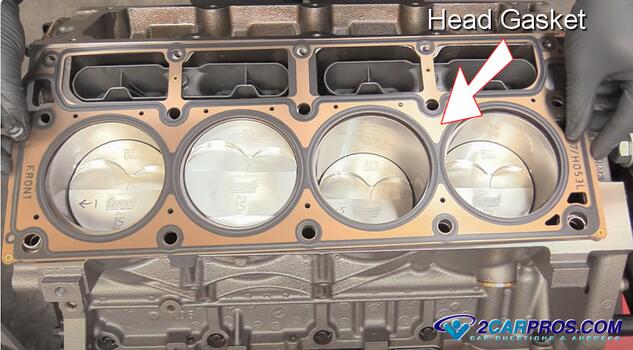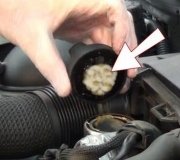A head gasket failure must be caught early to help protect the engine from additional damage. Understanding and recognizing these symptoms will be beneficial to your pocketbook by avoiding breakdowns on the highway and saving your engine.
What is a Head Gasket?
An automotive engine head gasket is used to seal the engine block to the cylinder head which helps contain the combustion process. It also controls radiator coolant distribution between the engine block and cylinder head, when this gasket fails it is commonly referred to as a "blown" head gasket.
Symptoms of a Blown Head Gasket
Head gaskets do not fail the same way every time and there can be several variations of the failure. We will describe the most popular failures down the more obscure.
1. White Smoke or Steam form the Exhaust Pipe: White smoke or steam is normal when the engine is cold because water/moisture is a normal byproduct of the combustion process, but when the engine heats up this will normally disappear. If this condition continues after the engine is hot, then the engine is burning coolant which usually means a blown head gasket (most common). Also, this smoke will have a pungent smell, further the confirmation of the failure.
2. Engine Overheats: When a head gasket fail is will cause the engine coolant level to drop or interrupt circulation resulting in engine overheating. This can also affect the engine coolant temperature readings while showing "cold" on the temperature gauge.
3. Milky Color Engine Oil: Coolant can be allowed to enter the engine crankcase where the oil is located. When this happens the engine oil will get contaminated and turn a light brown or tan color, also under the engine oil fill cap you will see drips of water. Coolant inside the engine will cause the crankshaft and connecting rod bearing to fail which most of the time requires a new/rebuilt engine.
4. Missing Coolant: A head gasket can fail slightly, this is the most difficult problem to find because it does not leave the obvious signs of the blown head gasket. No white smoke from the exhaust pipe, the engine oil looks okay, and it can even elude chemical and emission testing. This is because the leak is so slight the coolant is burned without leaking into the crankcase. The only way to tell is if you constantly add coolant and the level keeps dropping even though you do not have an external coolant leak.
Conclusion
To confirm your engine has a blown head gasket please follow this guide - Testing for a blown head gasket
Credits
This guide knowledge base was created by the 2CarPros Team, and by Ken Lavacot: Automobile repair shop owner and certified master automobile technician of over 30 years. If you have question or need help please ask one of our experts we are happy to help. Please visit our 2CarPros YouTube Channel.




